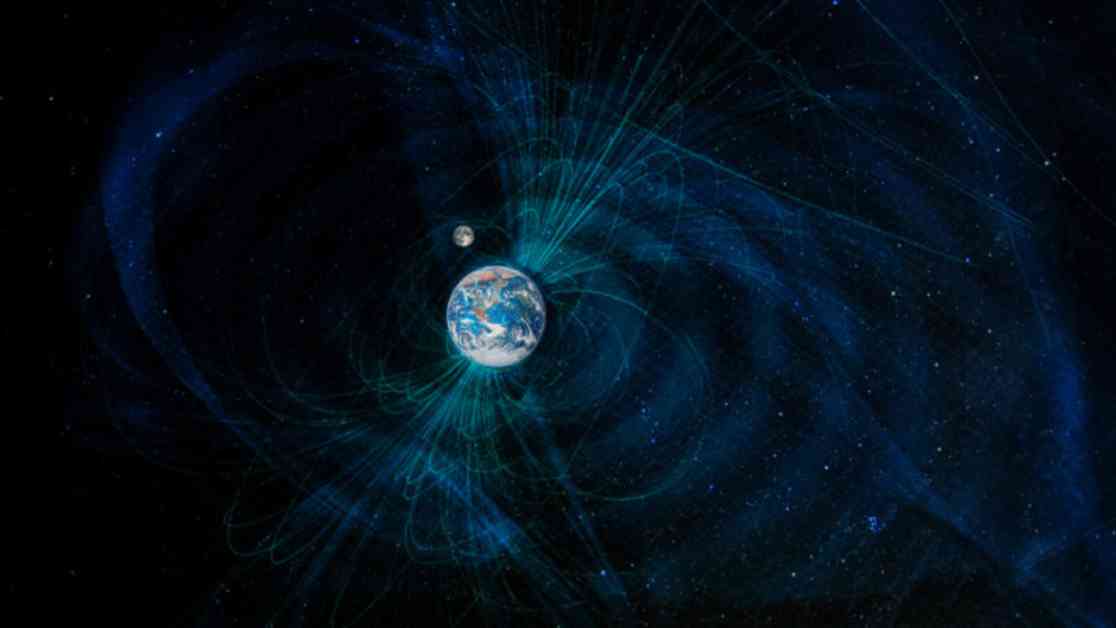About 41,000 years ago, Earth experienced a sudden shift in its magnetic field. This flip caused positive to turn negative and negative to turn positive. Geoscientists, using data from the European Space Agency, have recreated the sounds of this cataclysmic event. The audio resembles the eerie sounds of creaking wood and falling rocks in a chamber.
The Earth’s magnetic field, generated by the core, acts as a protective shield around our planet. This shield is crucial for sustaining life on Earth, making it unique compared to other neighboring planets. During the Laschamp event, the magnetic shield weakened significantly, allowing ionizing radiation from the sun to bombard the Earth. This resulted in mass extinctions, electrical storms, solar winds, climate changes, and alterations in ancient human behavior.
Evidence of this event was discovered in the French Massif Central, with traces found in the Laschamp lava flows. Additionally, levels of the beryllium-10 isotope spiked, and preserved kauri trees in New Zealand showed increases in atmospheric radiocarbon.
Researchers estimate that it took 250 years for the magnetic field to flip during the Laschamp event. It remained in this state for 400 years before returning to its current position. While four centuries may seem long to us, in geological time, this is considered a rapid change.
Over the millennia, Earth’s magnetic field has flipped multiple times, with no clear pattern as to why. The magnetic field is constantly in motion, with the Magnetic North Pole gradually shifting north-northwest by over 1,000km since 1831. NASA notes that the pole’s speed has increased from 16km per year to about 55km per year.
Ongoing projects like the European Space Agency’s Swarm mission utilize satellites to monitor magnetic signals around Earth. These efforts help predict any potential magnetic field reversals. Although researchers believe another flip is not expected for thousands of years, they are particularly monitoring the “South Atlantic Anomaly,” an area where the magnetic field is weaker than usual.













